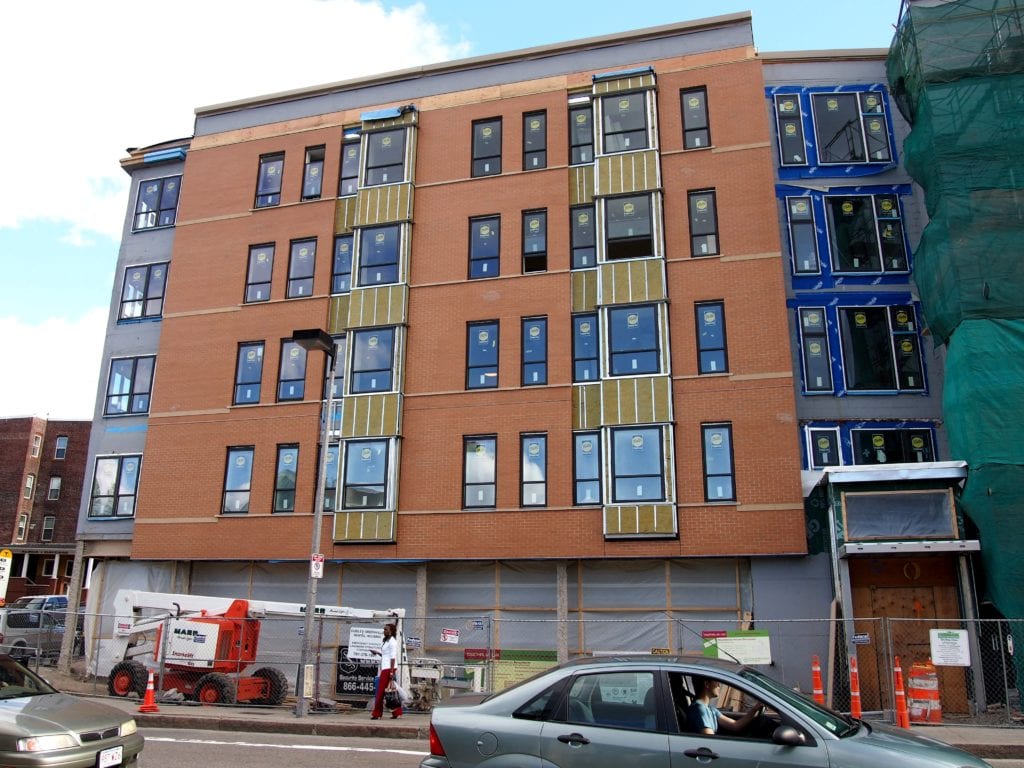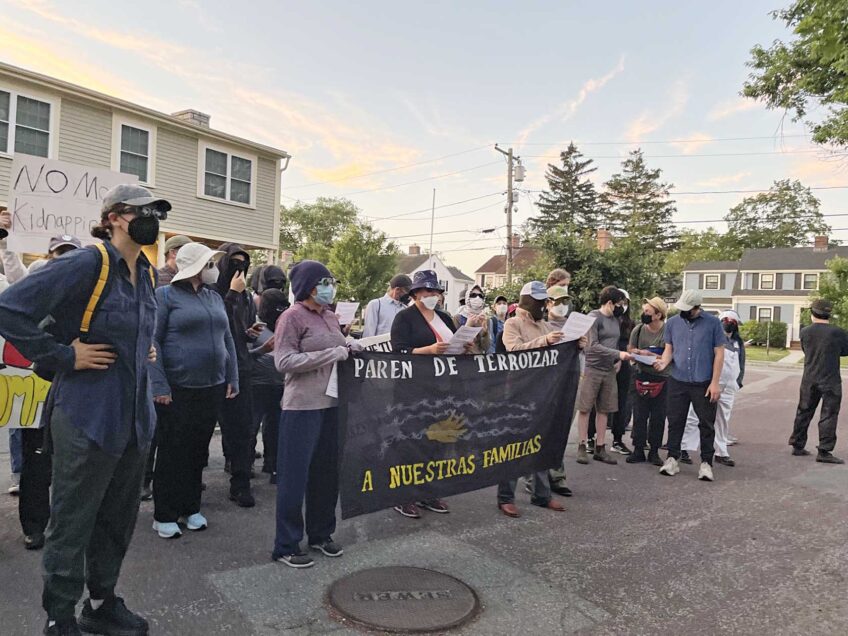
While much of the debate on housing costs in Boston centers on the atmospheric rise of luxury condos or the middle-class being squeezed out of the picture, housing advocates say the real crisis is the lack of housing stock for renters across the city — a problem that results in some 50,000 renters in Boston now spending more than 30 percent of their income on rent.
The City of Boston’s Housing Boston 2020 Report details that 46,000 households, which equates to one in every five in the city, spends more than 50 percent of their income on housing. The report went as far as to say that 23,000 low income households that pay more than half their incomes for housing are “at risk of becoming homeless.”
And it gets worse if you look at the work of Michael Stone, University of Massachusetts Boston Professor Emeritus of community planning, public policy and social justice. Stone has compiled numbers that show about 37,000 Boston renters with incomes of less than $20,000 a year, and another 19,000 with incomes of $20,000-$35,000, pay more than 30 percent of their incomes for rent — numbers that mean over half of the renters in the city are paying over 30 percent of their incomes for rent.
According to Stone, these households of renters also disproportionately contain people of color and do not include homeless individuals and families, which have reached record levels in Massachusetts.
Earlier this year, Mayor Martin Walsh launched the Mayor’s Housing Taskforce to produce a housing plan for the city focused on increasing the supply of housing to meet the city’s economic growth, increasing the supply of housing for elderly and low-income households and establishing incentives for the development community to meet the housing needs of the middle class.
“We are crafting a new housing blueprint based on very good graphic data and our goals and strategies,” said Sheila Dillon, director of the city’s Department of Neighborhood Development. “We need to continue to build affordable housing and we have been very successful at doing that in the past. We also need to build more moderately priced housing to take pressure off the housing stock.”
Dillon said that the housing taskforce plans to have a housing plan for the city by the end of June. This plan will cover the existing housing status and consider growth over the next 10 years. A number of factors are being taken into consideration, including rising housing costs, housing demand, new housing models and resources for supporting new housing.
“We know we have too many households that are rent burdened now. We also know that we are anticipating job growth over the next 10 years and we very, very much have to use those data points over the next 10 years and plan,” said Dillon. “We are looking at it all right now and trying to figure out what is best for Boston.”
According to Dillon, there are 52,000 affordable housing units in Boston out of 276,000 total units.
The challenge Boston faces is that it can proudly say that it has the highest share of affordable housing — 19 percent — of the 25 largest cities in the U.S., but as the number of renters paying such a high percentage of their income for rent attest it is still not enough.
Stone does not see an end in sight. His work points out ongoing changes in current subsidized housing stock suggest that the number of low-income households paying such a high percentage of their income for rent will only grow.
Stone said he sees three main reasons for this rise.
First, Boston has become one of the most unequal cities in regard to the widening of income, which impacts housing because those at the top are paying top dollar for housing and pulling up the price of all housing in the city.
Second, fallout from the housing crisis and predatory lending and wide-spread foreclosures throughout the city has pushed low- and moderate-income homeowners into the rental market, increasing the competition for available rental units.
Third, several thousand units of subsidized rental housing in Boston have been lost to expiring use restrictions and expiring subsidy contracts and been converted to market-rate housing, which leaves renters with rents they can no longer afford or pushes them out to compete in the private rental market.
Dillon said city officials meet every two weeks to track affordable housing units to anticipate those that might be shifting to market-rate. She acknowledges that losing affordable housing units to market rate based on expiring use restrictions is a challenge, but she said the city works to keep this from happen as much as possible. In addition, the city has now made it a requirement that any new affordable housing units built will be affordable in perpetuity and cannot be changed to market rate.
“It is important to meet demand, but it is as important to preserve what we have,” Dillon said. “We have to make up back deficit, but continue to build more.”
Stone is skeptical that the city’s plans to add more affordable housing will do little more than help recover some of the housing lost to expiring use restrictions and unlikely increase the affordable housing stock to levels that will have an impact overall. He also cautions against diverting funds to middle-class housing when the real crisis is for low-income renters.
Kathy Brown, coordinator with the Boston Tenant Coalition, agrees strongly, pointing out that Boston is a majority renter city, though it is not often viewed as such, and renters are currently the most vulnerable to rising housing costs.
According to the U.S. Department of Housing and Urban Development, the median family income for metro Boston is $95,000 and the median family income for the city of Boston is $65,000. With middle-income referring to households with incomes between 80 percent and 120 percent of the median family income, the range for families in and around Boston is $75,000 to $115,000 in metro Boston and approximately $52,000 to $78,000 in the city.
Brown stressed there needs to be a real distinction about what constitutes the middle class in regards to housing and who exactly is being targeted with housing programs.
“There is something horribly wrong with this picture when you are advocating resources for middle-income housing that no Latino or black people can afford,” Brown said.
She wants a clearer distinction about what numbers city officials are considering when talking about targeting resources toward the middle class. Often metro Boston numbers are made part of the picture, when they vary from the numbers in the city.
“We are all about supporting work force housing for the people of the working middle class not people from the suburbs coming in,” Brown said. “Don’t use precious land and city resources to advocate them coming to Boston.”
“We need to help people stay in their homes, stay in neighborhoods and stay in Boston,” she added.
Generally, housing standards suggest that paying 30 percent of household income on rent is affordable. But Brown said this standard does not tell the real story.
“If you are spending 30 percent of your income on rent and you make $15,000 and you live in Chinatown that is really different than if you spend 15 percent and you make $100,000,” Brown said. “If you only have two-thirds left and you have to pay for all those other things, it is really different if you are at the low-income end than if you are at the high end.”
Boston City Councilor Ayanna Pressley called the need for more affordable housing and lower rents a “neighborhood transcendent issue.”
“As someone representing the entire city of Boston it is rare that I am meeting with residents and participating in a discussion where the issue and need for more affordable housing and lower rents does not come up,” Pressley said.
Pressley sees housing crucially tied in with her anti-poverty agenda and the effort for more economic development and more business in Boston’s neighborhoods.
“When people are using such a larger percentage of their income for their rent they don’t have any purchasing power,” she said. “How do we build wealth?”
She added that it is crucial that residents have purchasing power to invest locally to help improve main streets and add more stores and restaurants and other businesses that will help neighborhoods flourish.
She also advocates for the city to streamline the building process, helping developers keep timelines and costs down, savings that can be passed on to renters.
“All these things work together,” Pressley said.






